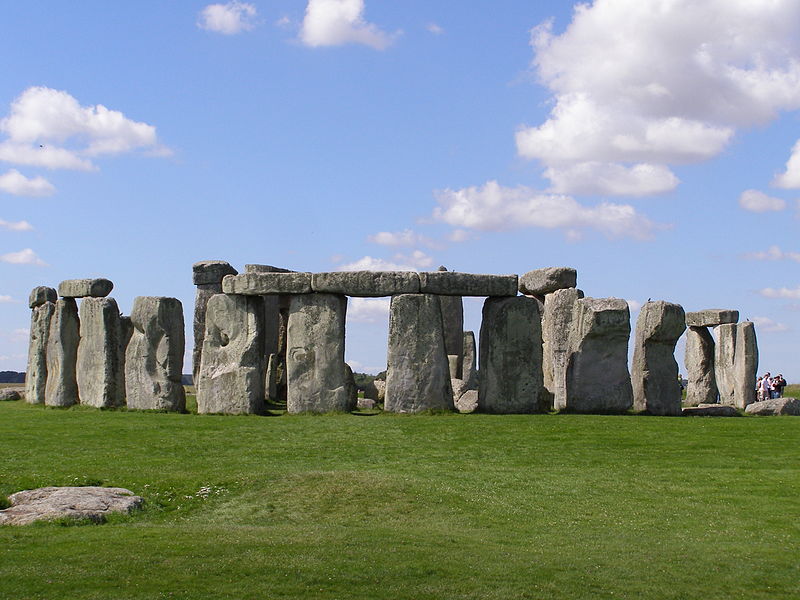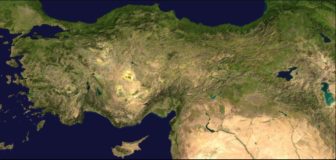TWH – Megalithic monuments like Stonehenge, and the questions of who built them and why, are frequently of special interest to Pagans. DNA analysis has become a key tool of archaeology in hopes of answering some these questions.
Recently, the use of DNA has revealed much about the megalith builders of northwestern Eurasia. Two recent articles, one from the BBC and one from Nature, refer to a DNA study. Both articles discuss DNA findings about the origins of megalith builders in present-day Britain.
These megalith builders also brought Neolithic “tech” to this region. Megaliths refer to dolmens, and passage grave or tombs. Among all megaliths, Stonehenge has the most fame.

Stonehenge [image credit: garethwiscombe/Flickr]
How Neolithic Tech came to present-day Britain
According to these two reports, farmers migrated from Anatolia, roughly present-day Turkey. Around 4000 BCE, their descendants brought Neolithic technology into present-day Britain. That technology included farming and building megaliths.
In the Neolithic (New Stone Age) Revolution, people invented farming. They domesticated animals. People began to dwell in semi-permanent settlements. These trends occurred independently in many places at different times. One of those places was the Fertile Crescent. That area is located in present day Iraq, Syria, Lebanon, Israel, Palestine, and Egypt, as well as parts of Turkey and Iran.
When the descendants of these farmers arrived in present-day Britain, they encountered Hunters, Gatherers, and Fishers (HGF). The HGF only had Paleolithic (Old Stone Age) technology.
Scientists based their DNA analysis on the remains of six HGF and of 67 Anatolian Neolithic Farmers (ANF). These remains were dated from 8500 to 2500 BCE. Scientists could then compare the DNA of these two groups.
Around 6000 BCE, Neolithic farmers left Anatolia (present day Turkey). These farmers and their descendants followed two routes into northwestern Eurasia. One route followed the Danube into northwestern continental Eurasia. People on the other route traveled across the Mediterranean and up the Atlantic Coast. By 4000 BCE, those following the Mediterranean route had reached present-day Britain.

NASA/Goddard Space Flight Center [Public domain]
Anatolia showing its proximity to the Fertile Crescent.
These migrants created the megalithic cultures of northwestern Eurasia. They built Stonehenge and New Grange (Brú na Bóinne). Around 2500 BCE, this culture began to decline. Within a few centuries, new migrants had largely replaced these farmers and megalith builders.
Hunters, Gatherers, and Fishers (HGF) had spread throughout northwestern Eurasia after the end of the last Ice Age. According to genetic evidence, these HGF carried genes for blue eyes and dark hair. Genetic evidence suggests that by 6000 BCE, skin color in this region varied. In contrast, the ANF carried genes for paler skin, brown eyes, and black or dark brown hair.
The descendants of the ANF in Britain had most genetic similarities with the descendants of ANF in northern Spain. This supports the Atlantic Coast migration model.
In contrast, scientists found consistent genetic differences between the indigenous HGF and the ANF. The genetic contribution from the indigenous HGF appears to be relatively minor. No one knows if the contact between the ANF and HGF involved violence, epidemics, or interbreeding. Different initial population sizes could explain the smaller genetic footprint of the HGF. Farming supports many more people than hunting does. Smaller groups would also leave smaller genetic footprints.
From 4000 BCE until about 2450 BCE, the ANF formed the dominant culture in insular northwestern Eurasia. Evidence indicates that the ANF had begun to decline after 2450 BCE. This decline occurred in both insular and continental northwestern Eurasia. The cause or causes as yet remains unknown. Epidemics, crop failure, natural catastrophe, or violence could have caused this decline.
After the decline of the ANF, pastoralists or cattle farmers from the Eurasian Steppe, replaced them. These pastoralists formed the third and last great migration into Europe.
This data roughly fits with the dates for the two most well-known megalithic monuments. People built Stonehenge around 3000 BCE. After 2400 BCE, its construction tapered off. The last construction of megaliths occurred around 1600 BCE. Indicating some use after the decline of the megalith builders. No one has a clear idea when it fell into disuse. People built Brú na Bóinne (New Grange) around 3200 BCE, but abandoned it by 2000 BCE.
People buried in megaliths were related
Around 4500 BCE, megaliths began to emerge along the Atlantic coast of present-day France. They emerged around 3700 BCE in present-day Britain. Human remains have been found in them. These megaliths consist of dolmens or passage graves.

Jim Champion (treehouse1977) [CC BY-SA 2.0 (https://creativecommons.org/licenses/by-sa/2.0)
Chûn Quoit, a dolmen in Cornwall [image credit: Jim Champion]
Shared DNA, however, occurred more often with the Y chromosomes, than with mitochondrial DNA. Fathers pass the Y chromosome to their sons. Mothers pass mitochondrial DNA to their children. The presence of larger amounts of related Y chromosomal DNA indicates social descent through the male line.
These studies give us a much fuller picture of the people who built Stonehenge, Brú na Bóinne, and other megaliths. They lived in patrilineal farming communities. The presence of ceremonial centers like Stonehenge suggests connections over a wide area.
A lot about the Neolithic and Megalithic age in northwestern Eurasia remains unknown. The construction of centers like Stonehenge indicates a certain level of social organization.
Yet questions still abound. It is unknown if this social organization was cooperative or coercive, or if the dispersal of megaliths over a wide area indicates a common culture. Did trade networks link these various Neolithic communities? Did beliefs of the culture give rise to their activities at places like Stonehenge? And if so, what type of belief(s)?
The megaliths of northwestern Eurasia have long fascinated neo-Pagans and others. Unfortunately, like the ancient Celts, they left no written records. The incorporation of DNA analysis in archaeology has provided us with another window on their world.
As fascinating as this data is, it is based on the extremely small amount of surviving material. This survival bias should remind us that we have, at best, an imperfect knowledge of the past. That imperfect knowledge of the past does not lessen its fascination for many.
The Wild Hunt is not responsible for links to external content.
To join a conversation on this post:
Visit our The Wild Hunt subreddit! Point your favorite browser to https://www.reddit.com/r/The_Wild_Hunt_News/, then click “JOIN”. Make sure to click the bell, too, to be notified of new articles posted to our subreddit.